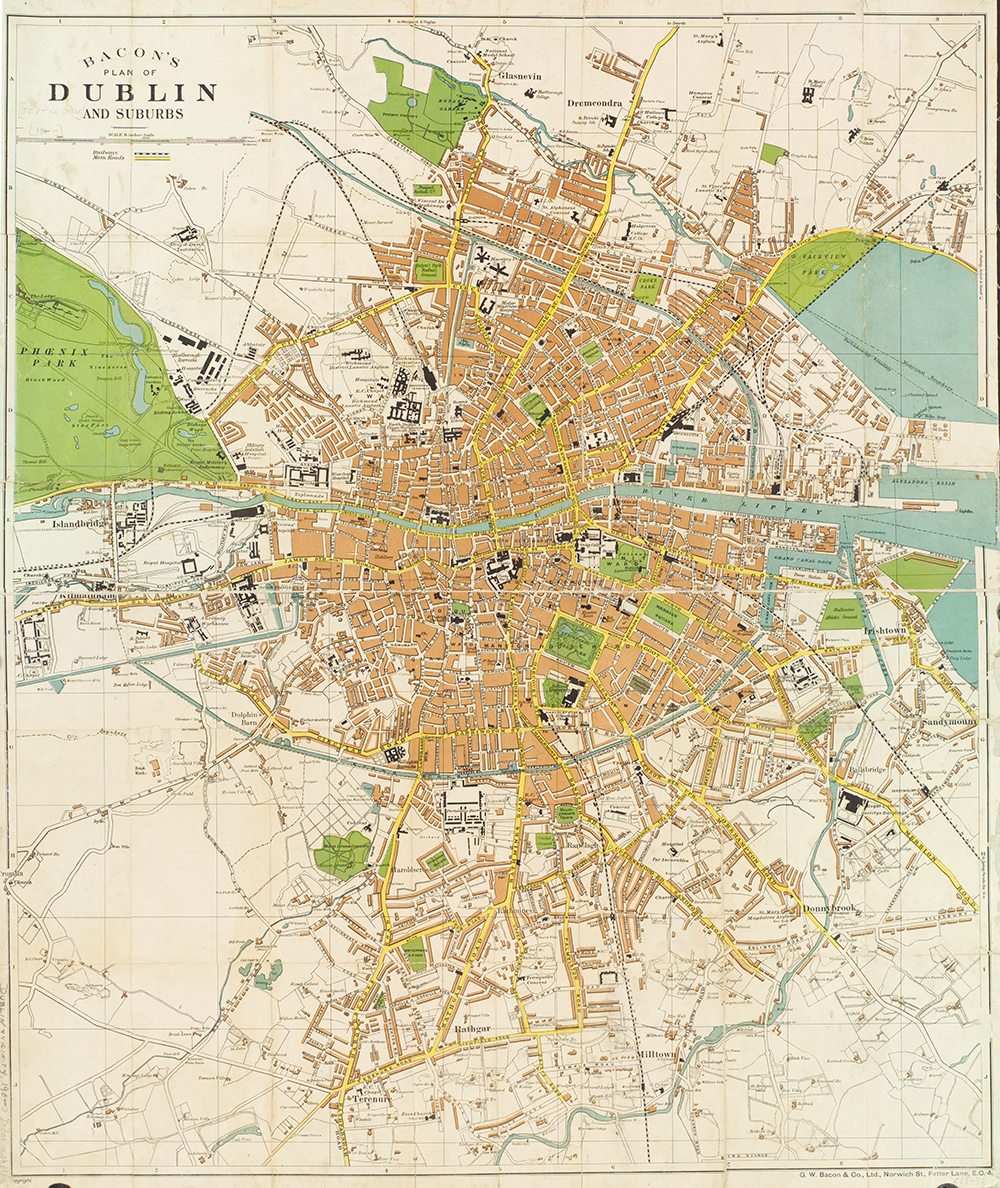City as Character: Getting lost in the text-cities of Joyce, Döblin, and Dos Passos / Tyler Malone in: Lapham's Quarterly April 30, 2018
Sometimes I forget that I’ve never been to Dublin. I feel its
cobblestones under my feet. I hear the “shouts in the street” of Irish
schoolboys—what Stephen Dedalus calls “God” in James Joyce’s Ulysses—as
clearly as I do the susurrations of my dog Bloom beneath my desk as I
write. I picture the cemetery where my dog’s namesake, Leopold Bloom,
attends the funeral of Paddy Dignam, spying at the edges of the funeral
party a “lankylooking galoot” wearing a mackintosh, more vividly than I
can any of the cemeteries in which my grandparents are buried. I have an
uncanny familiarity with what Dedalus elsewhere calls the “items in the
catalogue of Dublin’s furniture”: the Martello Tower at Sandycove, the
Forty Foot promontory, the “scrotumtightening sea” below, the
“unwholesome sandflats” of Sandymount Strand, the residence at 7 Eccles
Street, Sweny’s Chemist, Trinity College, Merchant’s Arch, where a man
might buy a smutty book like Sweets of Sin for his wife, and on through to the Liffey.
This March marked the hundredth anniversary of the publication of the first chapter of Ulysses—the preeminent “modernist city novel”—in The Little Review. Joyce said to writer Frank Budgen, as they walked along the Universitätstrasse in Zurich, that one of his goals in writing Ulysses
was “to give a picture of Dublin so complete that if the city one day
suddenly disappeared from the earth it could be reconstructed out of my
book.” One can imagine John Dos Passos stating a similar aim with regards to his New York City novel Manhattan Transfer, or Alfred Döblin saying the same of his Berlin Alexanderplatz.
These three novels are modernist city novels of the interwar period
that move beyond story and character to build structures and trace
movements, reconstructing modern metropolises that a world war would
soon change forever. Joyce, Dos Passos, and Döblin fashioned not novels
but eternal text-cities in which the reader may witness, wander, get
lost.

Large-scale
plan of Dublin, G.W. Bacon & Co., c. 1915. The New York Public
Library, Lionel Pincus and Princess Firyal Map Division.
Ostensibly, Berlin Alexanderplatz—reissued last month by
NYRB Classics in a new, long-awaited Michael Hofmann translation—is the
tale of Franz Biberkopf, “former transport worker, housebreaker, pimp,
manslaughterer,” who, upon his release from Tegel Penitentiary, attempts
to stay on the straight and narrow.... [mehr] https://www.laphamsquarterly.org/roundtable/city-character

Keine Kommentare:
Kommentar veröffentlichen